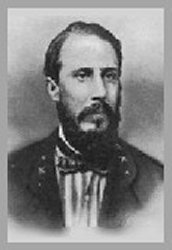Edward Porter Alexander (1835-1910) was a Confederate artillery commander during the War for Southern Independence. This native Georgian graduated third in his class from West Point in 1857and then helped to develop for the army the wigwag (semaphore) communications system of sending messages by means of signal flags. Alexander entered the Confederate army as a captain in the Corps of Engineers and used his signaling system at the Battle of First Manassas to alert the Confederate line of the Union movement around their left flank.
Few soldiers saw more service during the war than Porter Alexander. He watched the 1862 Battle of Gaine's Mill from an observation balloon while he was serving as chief of the army's ordnance. But by the end of the year, he had been promoted to colonel and given command of the I Corps artillery. His well placed cannon at the Battle of Fredericksburg played a huge role in defeating the Union army, and again at Chancellorsville, he skillfully deployed his weapons in that Confederate victory. Alexander commanded approximately 170 cannon in the bombardment that preceded Pickett's Charge at Gettysburg on July 3, 1863, and then campaigned in Tennessee with the I Corps that fall. He was promoted to brigadier general in February 1864 and fought in the Battles of Spotsylvania and Cold Harbor. He recovered from a sharpshooter's bullet in the shoulder received at Petersburg in time to participate in the final march to Appomattox.
Alexander was a prominent and valuable citizen after the Civil War, but his greatest gift may well be the memoirs of the war he recorded for posterity. He eloquently recounted his experiences and described the soldiers and commanders of the Confederate army.
Brigadier General Edward Porter Alexander, CSA
Click the buckle for grave site information.

